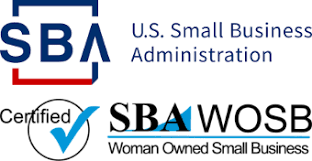Simplifying Public Sector Success
At Catalyst Consulting Group, we take the guesswork out of doing business in the public sector. As a woman-owned small business led by industry public sector enthusiast Michelle Warren, the team, along with its elite specialists, brings over 125 years of combined experience to the table. We collaborate with commercial furniture manufacturers, independent reps and dealers to provide strategic solutions that enhance your sales and positioning within the public sector.
Our EXPERTISE
Catalyst specializes in mobilizing commercial furniture sales teams and crafting winning strategies for the public sector, including federal, state, and local governments. We help you find, capture, and manage public sector opportunities, enabling increased revenue and reduced risk. Our expertise extends to identifying appropriate new contract vehicles, leveraging existing contracts for sales growth, and aligning the right manufacturers and dealers to maximize your success.
Our Services

Public Sector Consulting
Expert public sector consulting to help manufacturers and their distribution partners navigate contracts, boost sales, and strengthen strategy—delivering tailored guidance to win in the government marketplace.

Training & Education
Offering masterclasses, free Public Sector Decoded webinars, and monthly Catalyst Conversations with industry experts. Our passion is teaching others to unlock their public sector potential.
TESTIMONIALS
What others are saying

"A proud partner since their inception"
"Via Seating has been a proud partner of Catalyst Consulting Group since their inception. In fact, we are very proud to say that we were CCG's first partner. Our initial intent was to develop a strategy to grow our Federal and Public Sector business.
By engaging with Michelle and her team, we not only grew this market segment, but we built a stronger team and tracking system to support it. We have grown our business significantly both in the Federal and Public Sector/Contract market year over year. Engaging with CCG was pivotal to achieving this growth!"
- Nora Fenlon


"Instrumental in transforming our sales"
"Catalyst Consulting Group has been instrumental in transforming our Public Sector sales. Their expert team provides us with innovative ideas to expand our products, discover new markets, and engage new relationships. The level of professionalism and dedication they demonstrate is truly exceptional at a scale we could not achieve with one individual. We highly recommend Catalyst Consulting Group to any organization looking to enhance and grow their Public Sector sales."
- Scott McPartlin


"A wealth of GSA knowledge"
"Michelle is a pleasure to work with and a wealth of GSA knowledge. When I started my former position as Allseating’s Interim Director of Government Sales, she took me under her wing” and shared her personal wisdom as well as teaching me where to go to find more answers on my own. The more questions asked, the more apparent it became how knowledgeable she was as well as how connected she is to the public sector community. I would highly recommend Michelle to any organization seeking guidance in the government/public sector arena!"
- Rich Sassone


"Helped our reps establish a necessary foundation"
"Within a relatively short time we can see both material and measurable results in our public sector, and particular, OMNIA contract sales results. Today, as a result we have many new end-user customers, expanded relationships within current dealers, and a whole new “contract” door to knock on for MG products."
- Kelly Quackenbush


"Adding Millions of dollars in sales"
"Michelle built a government program and team at ESI/Fellowes over her 5 years adding millions of dollars in incremental government sales year over year. It is safe to say, Michelle is an experienced industry strategist, a savvy expert in the focused vertical markets we play in, and a growth-oriented leader."
- Todd Holderness


"Her expertise is unmatched"
"Over my many years of working in the industry I have encountered few individuals with a deeper knowledge and understanding of government and public sector clients then Michelle Warren. Her expertise, experience working with the A&D community, end-users, and creating rep and dealer programs is unmatched. I can highly recommend Michelle to aid in the development of a Federal sales strategy and approach."
- Kay Sargent


"Instrumental in transforming our sales"
"Working with Catalyst Consulting has been an amazing experience for our organization. From the very first meeting, their team showcased an exceptional level of professionalism that set the tone for our partnership. They possess a deep understanding of the public sector market, which has been crucial for our growth.
Over the past 10 months, their insights and strategies have significantly increased our public sector sales. They took the time to analyze our challenges and opportunities, and came back to us with solutions that we could implement right away. Their expertise in navigating the complexities of public sector dynamics helped us tailor our approach effectively.
I would recommend Catalyst Consulting to any organization looking to elevate their performance and drive meaningful change in the public sector."- Eric Gellman

Why Choose Catalyst?
Public Sector Experts
Decades of Experience
Unmatched Relationships
Strategies That Deliver
Small Business Champions
Proven Track Record
Straight Talk, Smart Advice
A Team you WIll ENjoy working with
DEDICATED TO SUCCESS
Want to see what we're about?
Sign up for Catalyst Conversations!
Catalyst Conversations is a free, expert led webinar each month featuring timely topics and industry expert advice. Get on our email list to learn more.
Meet the Team of Consultants & Support Specialists
At Catalyst Consulting Group, our consultants aren’t just advisors—they’re recognized leaders in public-sector strategy and execution. With decades of cumulative experience spanning federal, state, local, and education markets, each member of our team brings a track record of driving transformative wins for manufacturers, agencies, and dealer networks. We combine deep policy knowledge, insider relationships, and hands-on implementation skills to craft solutions that work today and scale for tomorrow. When you partner with Catalyst, you gain a team of industry-defining experts who roll up their sleeves, speak your language, and deliver results that set the standard for public-sector success.

Michelle Warren
Founder / President

Dan Conaty
Senior Consultant

Ryan Hay
Senior Consultant

Jeff Woodward
Senior Consultant

Melissa Hayden
SLED Consultant & Strategy Specialist

Lee Mauney
Consultant

Bethany Naro
Consultant

Anna French
Executive Coordinator

Erin Torres
Marketing Specialist



FOLLOW US
Copyright 2025. Catalyst Consulting Group. All Rights Reserved.
